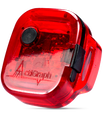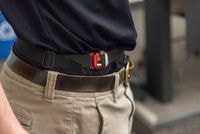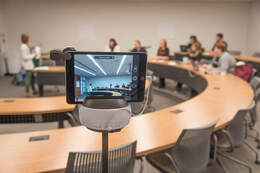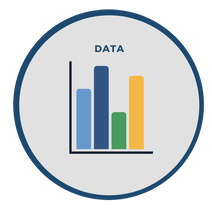How do you create a Community Data System?Data is used to drive decision-making. Data is collected from different community organizations (e.g. childcare, school, after school programs, clubs, and youth sport) using 3 measurement tools: The Youth Activity Profile (YAP), Video Observation and Physical Activity Tracking.
|
Community Measures #1: Youth Activity Profile
Questionnaires are one of the most common and cost-effective ways to estimate physical activity and sedentary behavior. They are easy to administer, especially on a large scale. Unlike physical activity devices (e.g., Fitbits, pedometers, accelerometers, etc.), questionnaires are able to provide important information about the types of physical activity and sedentary behaviors and the context in which they occur (e.g., physical education, afterschool programs, youth sports practice, etc.). We will use the Youth Activity Profile to explore the types and contexts of youth physical activity and sedentary behaviors during school and
out-of-school times. This data will be linked to other data collected as part of Wellscapes and will be added to the Community Data System (CDS). The following gives more information about the Youth Activity Profile and the process used to collect this data.
out-of-school times. This data will be linked to other data collected as part of Wellscapes and will be added to the Community Data System (CDS). The following gives more information about the Youth Activity Profile and the process used to collect this data.
The physical activity and sedentary behavior questionnaire that we use is called the Youth Activity Profile (YAP). The 15-item questionnaire is administered online and can be completed in approximately 15 minutes. Youth are provided with an individualized physical activity and sedentary behavior summary report and are encouraged to share the report with their parents. Communities are also provided with a report summarizing physical activity and sedentary behavior data. This questionnaire helps schools and communities understand where youth are more or less active, and highlights areas to expand physical activity opportunities to impact youth health and wellness.
|
How is the YAP Implemented?
Representatives from each school will be trained to administer the YAP. School teachers will select a time during which the YAP is administered online to students. Students will enter their gender, school level, and a student identification number and then proceed to complete the YAP. Upon completion, students can generate a printable report summarizing their physical activity and sedentary behaviors. |
|
Community Measures #2: Physical Activity Tracking

Activity trackers, like Fitbits, are used to help individual's monitor or track the amount of physical activity (e.g. walking, running, biking, etc.) they get throughout the day. To better understand the amount of physical activity young people accumulate while participating in a specific setting (e.g. school classroom, Physical Education class, youth sport practice, youth club meetings, etc.) we use a small activity tracker similar to a pedometer. Data from this activity tracker is then connected to other data collected as part of Wellscapes and combined into our Community Data System (CDS). The following gives more information about the activity tracker and the process used to collect physical activity data.

How is the Physical Activity Tracker worn?
The activity tracker is placed on each student using an adjustable elastic belt worn around the waist. Trained personnel will secure the tracker on each child.
What happens during Data Collection?
The research team is responsible for the activity trackers. A trained research assistant will secure the activity tracker onto child-sized elastic belts. The activity tracker will stay with the child for the duration of the allotted time period. After the time period is completed, the research team will collect the trackers from each child.
What is a Physical Activity Tracker?
The activity tracker we use is called an ActiGraph™ GT3 XP it is very similar to an everyday pedometer. This tracker measures minutes of physical activity at different intensities during a specific time period. As a result, we can know whether kids are participating in low-, moderate-, or vigorous-levels of activity and if kids are meeting physical activity guidelines.
The activity tracker is placed on each student using an adjustable elastic belt worn around the waist. Trained personnel will secure the tracker on each child.
What happens during Data Collection?
The research team is responsible for the activity trackers. A trained research assistant will secure the activity tracker onto child-sized elastic belts. The activity tracker will stay with the child for the duration of the allotted time period. After the time period is completed, the research team will collect the trackers from each child.
What is a Physical Activity Tracker?
The activity tracker we use is called an ActiGraph™ GT3 XP it is very similar to an everyday pedometer. This tracker measures minutes of physical activity at different intensities during a specific time period. As a result, we can know whether kids are participating in low-, moderate-, or vigorous-levels of activity and if kids are meeting physical activity guidelines.
Community Measures #3: Video Observation

Video observation systems like Hudl or SWIVL are often used by groups such as schools and sports teams to implement professional development for teachers or to help help coaches tailor sport practices. We will use video observation to better
understand the settings where young people participate in physical activity (e.g. school classroom, Physical Education class, youth sport practice, youth club meetings, etc.). Data collected will be used to provide teachers and leaders in the community with professional development. Video data will also be combined with other data collected in the Community Data System (CDS) to give a full picture of youth physical activity in the community. The following gives more information about video observation and the process used to collect the video data.
How does Video Observation work?
One camera will be placed in different youth settings (e.g. youth sport, classroom, etc.) to capture different situations or scenarios that may occur during a specific time. We will use the data to understand how the setting as a whole contributes to a child's physical activity, rather than understanding the physical activity of each child individually, Video observation is part of normal educational practices and is commonly used to provide professional development to teachers and coaches.
Where do the Cameras go?
We will use iPads and the SWIVL system to collect video. One iPad will be placed in the setting in a place that will not interfere with normal activities.
What happens during Data Collection?
The research team is responsible for the cameras. A trained research assistant will place the cameras at the beginning of the time period to begin recording the setting. After the time period is completed, the research team will collect the cameras. Video will be uploaded to the SWIVL online platform system, which is a secure online platform that will be accessible to teachers and leaders from each setting. Through the SWIVL platform, the video observations can be used to conduct professional development with each leader (e.g. teacher, coach, club leader, etc.).
understand the settings where young people participate in physical activity (e.g. school classroom, Physical Education class, youth sport practice, youth club meetings, etc.). Data collected will be used to provide teachers and leaders in the community with professional development. Video data will also be combined with other data collected in the Community Data System (CDS) to give a full picture of youth physical activity in the community. The following gives more information about video observation and the process used to collect the video data.
How does Video Observation work?
One camera will be placed in different youth settings (e.g. youth sport, classroom, etc.) to capture different situations or scenarios that may occur during a specific time. We will use the data to understand how the setting as a whole contributes to a child's physical activity, rather than understanding the physical activity of each child individually, Video observation is part of normal educational practices and is commonly used to provide professional development to teachers and coaches.
Where do the Cameras go?
We will use iPads and the SWIVL system to collect video. One iPad will be placed in the setting in a place that will not interfere with normal activities.
What happens during Data Collection?
The research team is responsible for the cameras. A trained research assistant will place the cameras at the beginning of the time period to begin recording the setting. After the time period is completed, the research team will collect the cameras. Video will be uploaded to the SWIVL online platform system, which is a secure online platform that will be accessible to teachers and leaders from each setting. Through the SWIVL platform, the video observations can be used to conduct professional development with each leader (e.g. teacher, coach, club leader, etc.).


